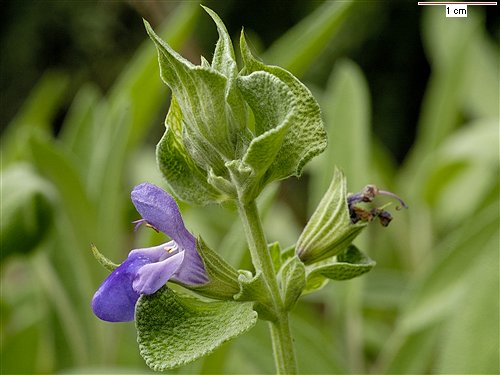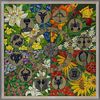Flower EncyclopediaENTER THE WORLD OF FLOWERS |
Other News
Salvia officinalis
Category: Herbs and spices
26 Jul : 13:47
To view pictures click on them



 Sage or Sage (Salvia officinalis) is a small evergreen shrub with ligneous stems, grayish leaves and blue to purple flowers, growing in Southern Europe and the Mediterranean, but also in semi-arid southwestern part of North America.
Sage or Sage (Salvia officinalis) is a small evergreen shrub with ligneous stems, grayish leaves and blue to purple flowers, growing in Southern Europe and the Mediterranean, but also in semi-arid southwestern part of North America.It is grown as a spice and herbs and can sometimes be confused with some similar species. "Salvia" (Salvia) is the name of the genus to which it belongs and garden chay.Tsafti in June and July, with small, purple flowers, arranged in clusters in the form of class. Sage leaves are evergreen, oblong, and covered with moss. They are spread and the aroma of rastenieto.Prilozheniyata and benefits that are attributable to its many and varied and are often shared with his closest species. Uses of sage are:
* Teas, infusions and decoctions, which are believed to have a soothing effect and help digestion;
* Preserving seasoning, such as cheese;
* As a spice in cooking.
In some parts of Europe, particularly in the Balkans, sage is grown to obtain essential oil, although usually in these cases along with him to collect and process and other related species such as Salvia triloba.
There are several varieties of cultural sage. Most of them are grown more as ornamental plants than for their medicinal properties. All are appreciated as a small ornamental flowering bushes and low antierozionno plantation, especially in dry and sunny climate. Be grown easily from summer cuttings.
Names of cultivars are:
* Purpurascens, with violet leaves, considered by some to be the strongest of the tea garden;
* Tricolor, with leaves, flecked in white, yellow and green;
* Berggarten, with large leaves;
* Icterina, with leaves, mottled yellow and blue;
* Alba, with white flowers,
* Lavandulaefolia, with small leaves.
A medieval saying, sometimes attributed to Martin Luther, was actually borrowed from the medieval medical school in Salerno and states that "there is nothing to die a man who looks sage": "Cur moriatur homo cui Salvia crescit in horto?. To this is added Hildegard of Bingen: "Why should a man die while sage grows in his garden, if not because nothing can beat death?". That is why the famous medieval philosopher Arnaldo Catalan Vilyanova of trying to introduce a sage in the culinary traditions of the Iberian Peninsula, and treatises but his advice does not become particularly popular in Iberia.
After Sage pretsafti, it must be cut to 1 / 3 of the height in order to continue to grow komppaktno.Salviyata prefers hot, sunny places with moderately dry, well-drained soil is where the limestone has (in the wild grows on rocky slopes in juniper arrays).
Reproduction: reproduction is by cuttings in early summer.
Salvia is combined well in the bed of gipsofila, lavender, santolinat, roses.
Category: Herbs and spices
Comments are turned off for this item0
| evergreen shrub flowering bushes summer cuttings sunny climate purple flowers |
You must be logged in to make comments on this site - please log in, or if you are not registered click here to signup























































